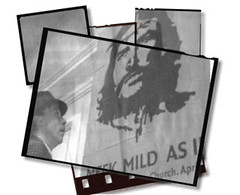Boyarin's conception of the parting of the ways is much more difficult to graph. It is a much more realistic conception even if it isn't as helpful heuristically. The first image used to describe formative Christianity and formative Judaism would be a spectrum with you guessed it Judaism on one end and Christianity on the other. It is important to note that if one where to graph this period no points would be marked on either of the polls. The next graph that would be helpful would be a sort of timeline that would have sects or communities that would be represented graphically as concrete entities producing waves. Theses waves would expand as if in an echo chamber mixing and changing with the waves of other groups and eventually returning to the sect or community commingling with other voices and taken up again by the sect or community. You can see why it may not be the best explanation for heuristic purposes, but what Boyarin is getting at is the parting of the ways was much more localized phenomenon and commingling throughout the spectrum can only be talked about in relation to localities and even then the evidence is at best sketchy. It is best to view the spread of ideas in categories of orthodoxy and heterodoxy categories that betray dialogue.
As someone 'attempting' to do NT studies this makes me much more conscious of not importing assumptions about a parting of the ways into the texts I study. This is especially important for a text like Romans where so much is riding on Jewish and Gentile relations, that an assumption regarding the parting of the ways may change the texts meaning considerably.


No comments:
Post a Comment